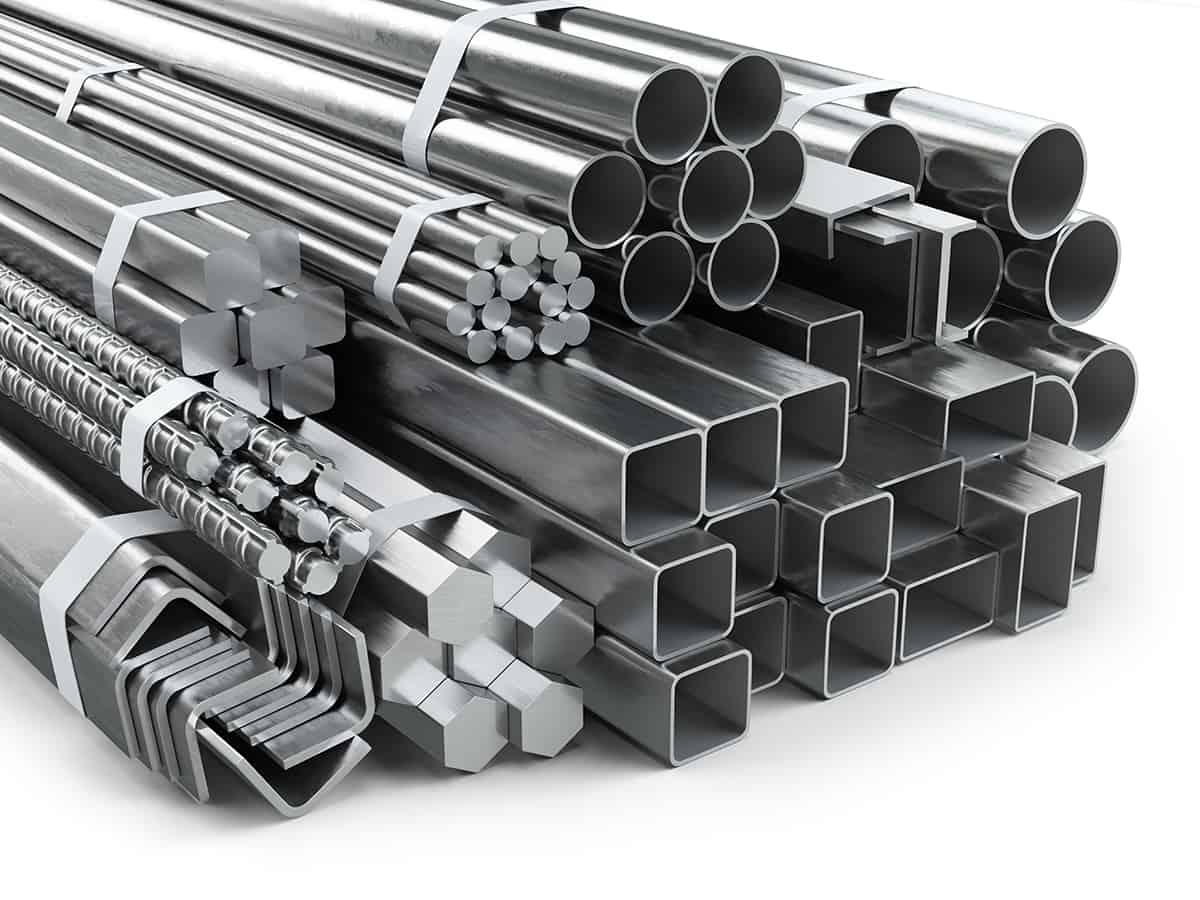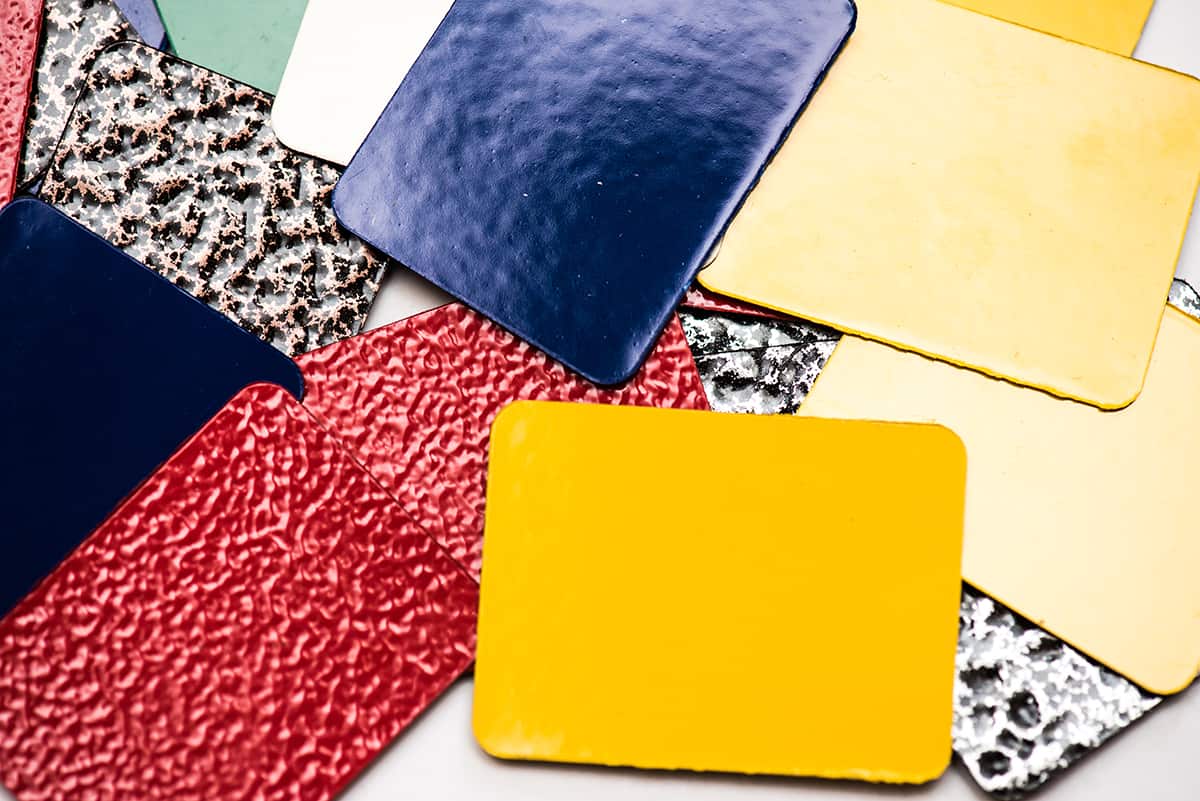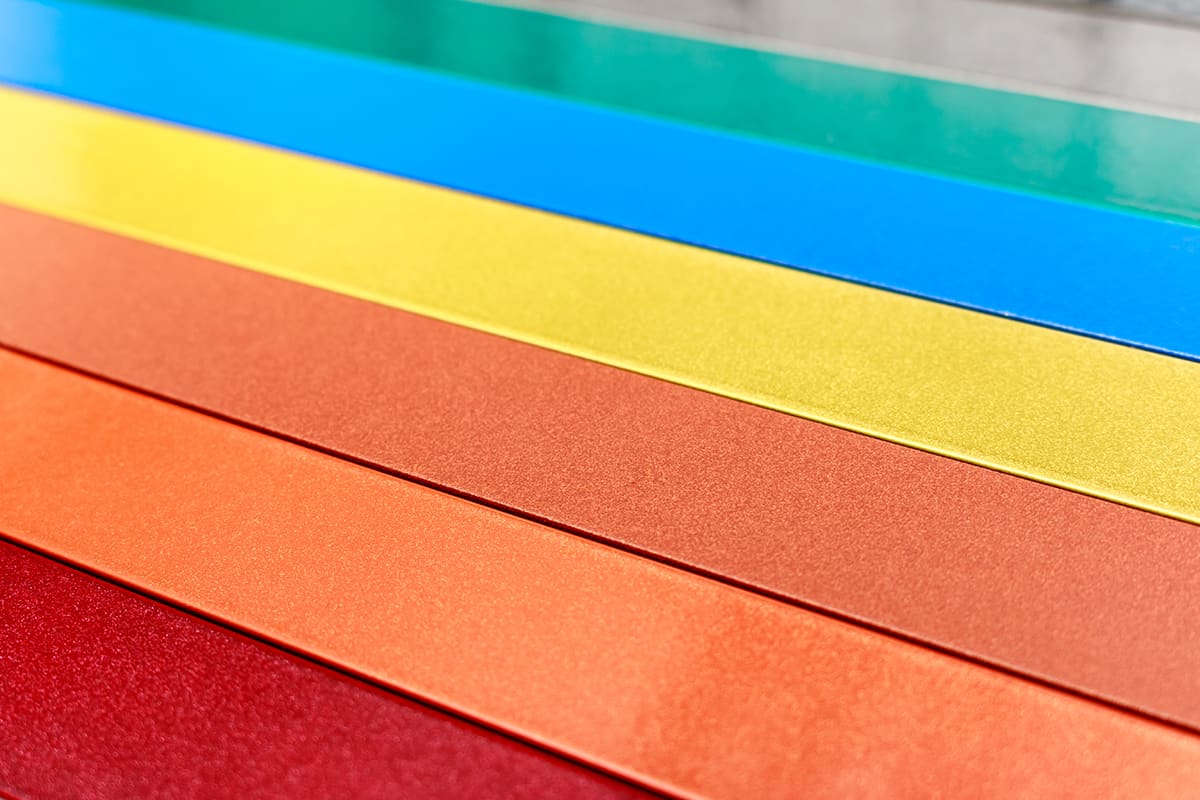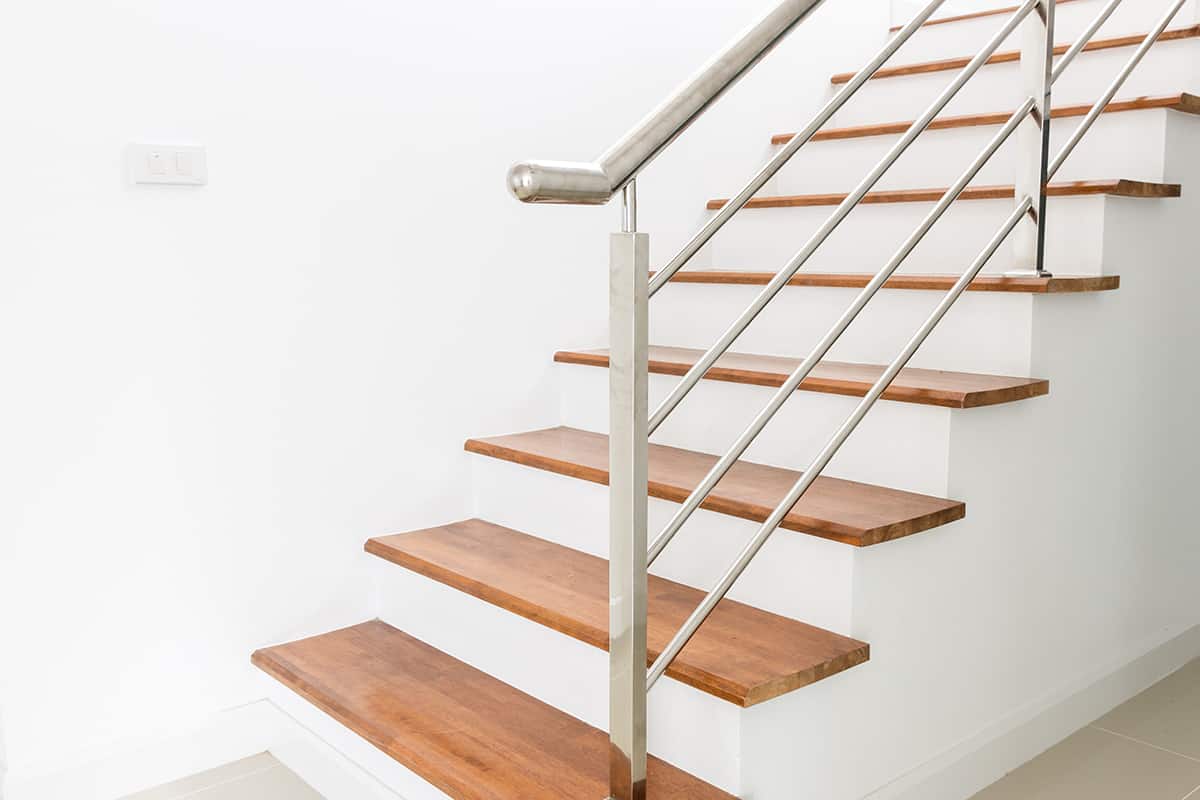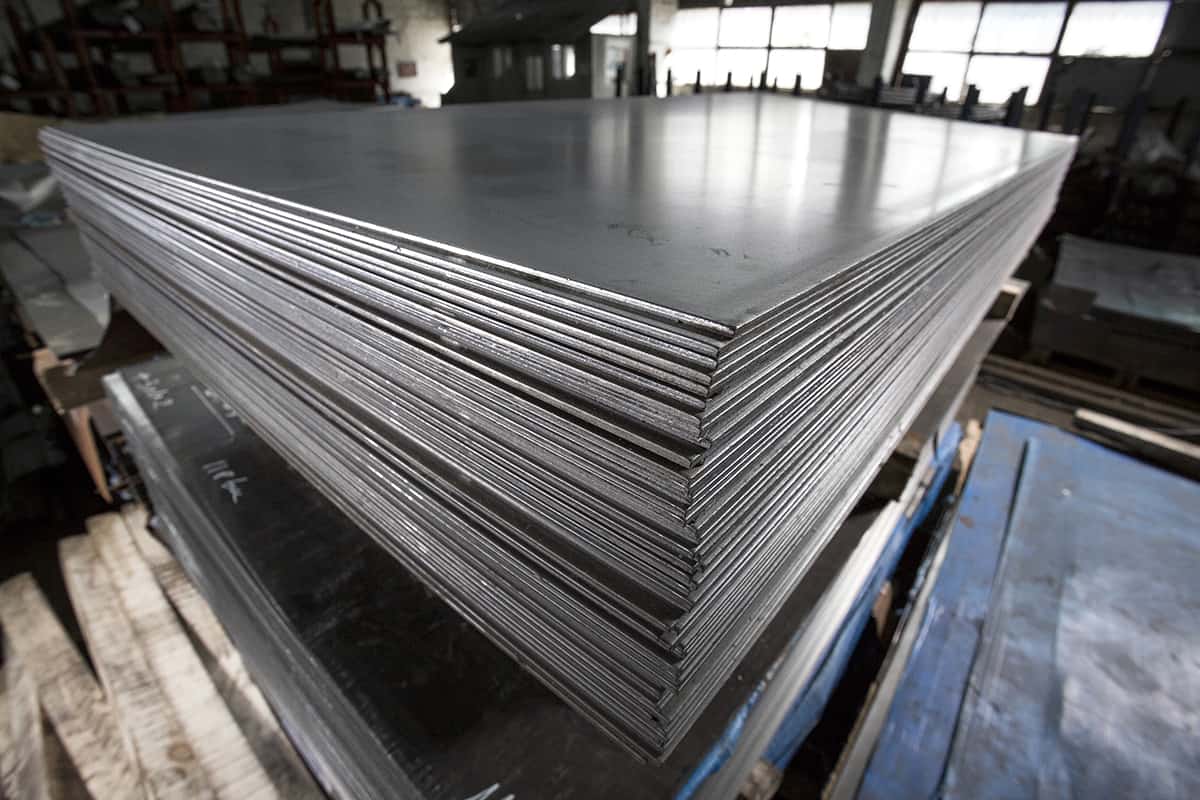If you are wondering what the differences are between powder coated and stainless steel, the pros/cons of each, when and which to choose the right, we’ll help answer all these questions in this article
How are Powder Coated Steel and Stainless Steel Different?
Powder-coated steel and stainless steel are both very strong metals that are commonly used in industrial settings for stairs, storage, and other surfaces. Though these materials have a lot of similar attributes, they are different in how they are made.
Powder-coated steel is formed from steel in a sealed carbon coating, which is made up of a mixture of powdered resin particles and other pigments. It undergoes a heat curing and electrostatic process, which results in the powder melting to a thin coating of durable film, entirely covering and protecting the steel beneath.
By comparison, stainless steel has a selection of additives mixed in with the iron and carbon, which give it its strength, durability, and corrosion resistance.
These additives include varying ratios of chromium, nitrogen, nickel, and molybdenum. The chromium is what turns regular steel into stainless steel since it reacts with oxygen to produce a thin film on the material which will not rust.
In order to be sold as stainless steel, the metal must contain at least 10% chromium; however, you can get stainless steels with a higher percentage of chromium, and these will be even more resistant to rust. No extra coating is required on stainless steel.
Benefits of Powder Coated Steel
Inexpensive
Many people choose powder-coated steel over stainless steel because it is the less expensive option. In most cases, powder-coated steel is considerably more cost effective than stainless steel, so it is great for cutting costs and still getting a high-quality material.
Durable
Though powder-coated steel is not as durable as stainless steel, it is still a very strong and sturdy material which works well in a variety of applications.
Rust resistant
The coating on powder-coated steel makes it rust resistant. This will prevent corrosion as long as the coating remains intact.
Low maintenance
Powder coated steel is easy to clean and take care of, requiring only sponge cleaning.
Finish variety
There are a wide variety of finishes available for this type of material, both in color and texture.
Drawbacks of Powder Coated Steel
Limited lifespan
Powder coated steel has a life expectancy of around 15 to 20 years, which is much less than that of stainless steel.
Benefits of Stainless Steel
Strong
Stainless steel is one of the strongest metal alloys available, and will not crack or warp under pressure.
Rust resistant
Stainless steel has a better resistance to rust than powder-coated steel and will remain rust free for much longer.
Low maintenance
Stainless steel is easy to clean and care for using a soft sponge and gentle detergent.
Long lasting
Stainless steel can last in excess of 100 years even in harsh conditions.
Drawbacks of Stainless Steel
Expensive
Stainless steel is more expensive than powder-coated steel, though many people feel the extra cost is warranted.
Limited finishes
Stainless steel only comes in a few finishes.
Powder Coated Steel Vs Stainless Steel
Here we have compared powder-coated steel and stainless steel, measuring them up against each other to see which material performs best in specific categories.
This is great for helping you to choose a material based on your priorities, for example if you are looking for which metal is going to be more cost effective, or which metal is going to be strongest.
Cost
If you want to know which of these materials is going to cost the least, the answer is that powder-coated steel will be less expensive than stainless steel every time. The metal additives that are included in the manufacturing process of stainless steel, such as chromium, ramp up the cost of this type of metal.
Powder coated steel offers many of the same benefits as stainless steel at a fraction of the cost, so using this instead of stainless steel is a great way of saving money while still sourcing a fabric that suits your requirements.
One thing you may want to consider, however, is the longevity of the material. Stainless steel is meant to last around 4 times longer than powder-coated steel, so it could pay for itself over the length of its lifespan compared to powder-coated steel, which you might need to replace every 20 years.
Strength
powder-coated steel is very strong, and will suffice in many applications; however, if you want the strongest material of these two options then stainless steel is the hands down winner.
Stainless steel is less malleable than powder-coated steel due to the extra hardening properties it possesses, and this makes it much stronger.
Stainless steel is known to be one of the most durable of all the types of metal alloys, and it can withstand heavy loads and heavy use. It is more resistant to breakages under pressure than powder-coated steel and will remain stronger for longer.
Lifespan
The lifespan of powder-coated steel and stainless steel is quite different, so if you want a material that is going to last a lifetime, then you will need to make the right choice. Powder-coated steel typically has a lifespan of around 20 years.
The protective layer on powder-coated steel is formed from high density particles, and this will prevent scratches, dents, and corrosion for an average of two decades.
Meanwhile, stainless steel has an expected lifespan of beyond 100 years. It is impervious to environmental conditions and is able to remain consistent even in high or low temperatures. This makes it suitable for use in very cool climates such as unheated storage units in cold regions, as well as in hot climates.
Stainless steel does not react to sunlight or freezing temperatures, and will last for in excess of a century even when left in hostile environmental conditions. This means that if you want to choose a material which is going to withstand a variety of conditions and last for the longest amount of time, then stainless steel is the best option.
Corrosion resistance
The coating on powder-coated steel is what gives it its corrosion resistance, so as long as this remains intact then powder-coated steel will not rust.
However, the steel which is sealed beneath the coating can rust, so if any cracks appear in the carbon coating which allow moisture in, then the steel underneath is very perceptible to corrosion. Stainless steel is corrosion resistant to a greater extent than powder-coated steel.
Though stainless steel can rust, it will take a much longer time and more severe conditions for it to show signs of corrosion. The level of corrosion resistance any stainless steel has will be dependent on the various quantities of its additives.
Chromium is one of the additives that gives stainless steel its corrosion resistance, and this must make up a minimum of 10% of the steel in order for it to be classified as stainless steel.
If you can find stainless steel which has an even larger proportion of chromium, then the level of rust resistance will be even greater.
If resistance to corrosion is a priority for your project, then stainless steel is your best option. It will withstand harsh conditions, such as saltwater, for a longer period of time before it begins to rust compared with powder-coated steel.
Finish options
If aesthetics are important in your application of steel, then both powder-coated steel and stainless steel offer good options, though, with powder-coated steel, there is a greater variety.
Powder-coated steel can be made in any color you like, from bright neon colors to grab attention through to neutral shades to blend in with a muted decor. Powder-coated steel also comes in a wide selection of finishes, such as matte, gloss, mirror shine, flat, and textured.
A textured powder-coated steel is a good option if you want to use the steel for flooring or stair treads, as it will create a non-slip surface.
Meanwhile, stainless steel has a silver color in a glossy satin finish. Other finishes of stainless steel are available to suit different styles, including brushed stainless steel which has a more subtle shine, and matte stainless steel which has a flat and dull appearance.
Maintenance
Both powder-coated steel and stainless steel are excellent choices of finish for areas that undergo regular cleaning, such as industrial staircases. Both of these materials are very low maintenance and just need to be wiped down with a wet sponge and mild detergent to be cleaned.
Avoid using strong chemicals to clean powder-coated steel because this can cause the coating to degrade and make the steel below vulnerable to water damage and rust. A soft sponge or brush can be used to remove stubborn areas of dirt on both powder-coated steel and stainless steel to keep them in good condition.
Avoid using wire brushes or abrasives on stainless steel as this can scratch the surface. Though both of these materials are very low maintenance and easy to clean, it is generally agreed that stainless steel represents the most low maintenance option.
